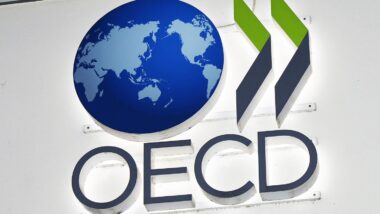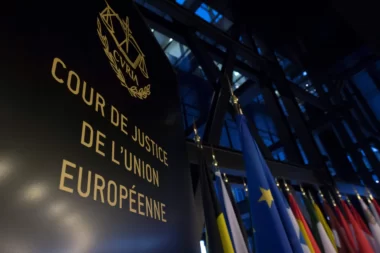Article published originally during the summer 2020.
Crowdfunding is experiencing an increasing momentum in the global economic landscape. Although it represents a unique category of fundraising, with different vehicles, processes and goals, its underlying concept is neither so revolutionary nor so different from a traditional whip round . Anyway, the coming of several disruptive events such as the Web 2.0 revolution, translated Crowdfunding into an innovative financing mechanism which is gaining always more attention from fundseeking ventures. Many different notions have been proposed with the aim of defining Crowdfunding, essentially developing a common conception that labels it as an internet-based open call for the provision of financial resources in order to support initiatives for specific purposes. It is really challenging to assess what would have happened if no one started to recognize in crowds a potential source both of finance and innovation; what is acknowledged though, is that nowadays companies are giving external individuals always more importance in several core functions, contributing to the rapid spread of the crowd phenomenon in all its derivations. Basically, Crowdfunding allows a large number of parties from different contexts to finance a project or a business by making a personal contribution, thus giving proponents the possibility to exploit their personal networks to raise funds. The innovation it provides could be found in its linkage to the crowd, implemented through dedicated platforms, that open new rooms for bridging investors’ and fundraisers’ communities. From a broad perspective, it is part of the recent wake of new forms of economic exchange which share common rationales including disintermediation through technological platforms, centrality of trust and reputation and connective dynamics. Provided that Crowdfunding encompasses different application models, this thesis focuses on the equity-based one; essentially, when a company wants to attract investments from individuals instead of credit institutes or private equity firms, this is called Equity Crowdfunding or Crowdinvesting . After the coming of 2008 crisis, traditional financing sources for startups and SMEs such as business angels, venture capitalists and banks, have become more risk averse; in this sense, some literatures have argued that Equity Crowdfunding could successfully fill in the financing gap which originated after the hardening of funders’ selection processes. Actually, despite its recent birth, Equity Crowdfunding currently forms a consistent part of the whole Alternative Finance segment for several countries, acting as a new disintermediated source of financing , which seems able to impact funding processes of young businesses in a relevant way, especially in this “digital era”.
Why Crowdfunding
The European market for crowdfunding has grown rapidly in recent years and is likely that it will grow further as investors look for yield-generating opportunities and people, organizations and businesses, notably start-ups can raise financing through websites (also known as portals or crowdfunding platforms) that acts as service providers or intermediaries between those wanting to invest and those wanting investment.
Improving the regulation of European crowdfunding service providers (ECSPs) and how investors as well as how small-to-medium sized enterprises (SMEs) can make use of crowdfunding as an alternative to bank intermediated funding has been a longstanding priority of the European Commission including as part of tis FinTech Action Plan. Rulemaking in this area was first proposed as part of the first launch of the EU’s Capital Markets Union (CMU) in September 2015 and has now become legislative reality as part of the 2020 relaunch as CMU 2.0. The European Commission is of the view that crowdfunding, in addition to being an important source of non-bank financing, can help spur job creation, economic growth and competitiveness – areas which the European Crowdfunding Stakeholders Forum, as an expert group of representatives of associations of concerned stakeholder groups as well as national competent authorities (NCAs).
Last October, the European Parliament has adopted the latest text for the European Crowdfunding Service Provider (ESCP) for Business Regulation. as well as related changes to Markets in Financial Instruments Directive (MiFid). The EU’s Regulation (ECSP Regulation) and a Directive (ECSP Directive) on Crowdfunding Service Providers were published in the EU’s Official Journal on October 20, 2020, entering into force on November 9, 2020 with its scheduled date of application beginning November 10, 2021. Both the ECSP Regulation and ECSP Directive have direct effect across the EU-27 and while the ECSP Regulation has direct effect, Member States have six months’ time to implement the ECSP Directive into national law. The original proposal for a regulation on crowdfunding, adopted by the European Commission in March 2018, has already enable crowdfunding platforms to easily provide their services across the EU.
Platforms have now to comply with only one set of rules, both when operating in their home market and in other EU countries. For investors, the proposal will provide legal certainty as regards the applicable protection rules. However, the rules do not stop there. The ECSP Regulation states that in the interests of legal certainty and in view of replacing national rules, a transitional switchover period applies. This means that a person carrying out activity that is covered by the ECSP Regulation and ECSP Directive may continue to conduct such business until November 10, 2022 under the existing national regimes (where these exist). During the transitional period, Member States can put in place special procedures enabling legal persons, which have been authorized under national law to convert such authorizations into ECSP compliant authorizations provided that such firms meet the requirements set out in the regime. Where crowdfunding service providers have failed to obtain an authorization as an ECSP by November 10, 2022 they should not issue any new crowdfunding offers after that date but may continue, in accordance with applicable national law, to service existing contracts, including collecting and transferring of receivables, providing asset-safekeeping services or processing corporate actions.
New rules a
- a single set of requirements that will apply to all ECSPs for offers up to EUR 5 million, calculated over a period of 12 months for each crowdfunding project owner. Larger fund raisings will fall into the scope of MiFID II/MiFIR and the Prospectus Regulation. Reward and donation-based crowdfunding are explicitly excluded from the scope of the new rules;
- a harmonized investor disclosure regime whereby crowdfunding project owners provide investors with a key investment information sheet (KIIS) for each crowdfunding offer or at platform level, in addition to a comprehensive set of disclaimers and recommendations on ECSP websites and communications;
- a suitability and appropriateness testing requirement for investors prior to being able to invest assessing their understanding of financial products and their ability to bear financial losses;
- a uniform authorization and passporting process for ECSPs across the EU-27 whereby the European Securities and Markets Authority (ESMA) has a central role in facilitating coordination and cooperation amongst national competent authorities (NCAs) or otherwise has supervisory powers including developing further technical standards and a binding dispute resolution mechanism; and
- detailed conduct of business obligations for ECSPs including duty to avoid and prevent conflicts of interest, restrictions on inducements to clients and on a ECSP participating in crowdfunding offers hosted on their crowdfunding platform.
THE REGULATION SHOULD BRING LEGAL CLARITY TO THE PROVISION OF THE SERVICES
In the case of crowdfunding services, it has become evident that although on the one hand, companies are looking for solutions to finance their projects through crowdfunding, the unregulated market of crowdfunding services has also led to negative examples of investors losing money. The establishment of common rules for crowdfunding platforms has been underway at the European level for several years. What improvements will the new regulation bring along?
First, the new regulation determines the crowdfunding service – matching of business funding interests of investors and project owners through a crowdfunding platform, which includes either the facilitation of granting of loans or the offering of transferable securities and instruments accepted for crowdfunding without a specific obligation and the provision of the reception and transmission of related client orders. In case a crowdfunding platform wishes to safe keep investors’ assets or provide payment services in the course of its activities, the platform must have a separate authorisation for the respective financial service. Nor can a crowdfunding platform operate as a multilateral trading facility or an organised trading facility without the relevant authorisation of an investment firm or receive deposits from the public without the authorisation of a credit institution.
One of the problems in the area of crowdfunding is that under the name of crowdfunding, there are financial services offered which would require separate authorisation. The new regulation creates legal clarity for companies and investors and makes it possible to define more clearly, which services the crowdfunding platform may provide in the course of its activities and when additional authorisation is required. The preamble to the regulation also points out, as a problem, that the fragmented legal framework in the Member States creates substantial legal costs for retail investors, especially in the case of cross-border crowdfunding services.
AUTHORISATION OBLIGATION FOR CROWDFUNDING PLATFORMS
The new regulation establishes an authorisation obligation for crowdfunding platforms. The information required to apply for authorisation is essentially similar to that required for other financial services authorisation, such as a description of the programme of operations, governance arrangements and internal control mechanisms, description of operational risks, information and evidence on prudential safeguards, description of the business continuity programme, and the documents providing proof of the management’s competence and reputation, etc.
The new regulation applies to crowdfunding offers with a total value of up to EUR 5 million over a 12-month period. As the Prospectus Regulation allows Member States to derogate from the obligation to publish a prospectus in a public offer of securities until the raising of funds up to EUR 8 million, Estonia has a limit that obligation to publish a prospectus is not applicable when raising funds up to EUR 2.5 million. Projects offered through crowdfunding will unequivocally be subject to a limit of EUR 5 million, which means that under this regulation, securities of up to EUR 5 million can be offered to the public through authorised crowdfunding platforms without the obligation to draw up a prospectus. Member States such as Estonia, where the obligation to draw up a prospectus has so far applied at a lower threshold, will have a transitional period to make the necessary changes at the national level.
Minimum prudential requirements are also set for crowdfunding service providers. Namely, the service provider must have own funds or an insurance policy, which at any time is at least EUR 25 000 or one-quarter of the fixed overheads of the previous year.
THE RULES ESTABLISHED TO PROTECT INVESTORS ARE SIMILAR TO THOSE ESTABLISHED FOR OTHER INVESTMENT SERVICE PROVIDERS
Under the new regulation, a number of rules have been established to protect investors, imposing similar requirements on the activities of crowdfunding service providers as on other investment service providers. Crowdfunding platforms must distinguish between sophisticated and non-sophisticated investors, just as MiFID II distinguishes between professional and retail clients. When defining an investor as a sophisticated investor, the platform should take into account the limits set out in the regulation on the income, volume of assets, or other criteria of natural and legal persons. The service provider must assess its knowledge and ability to bear losses before granting the customer access to the platform’s services, and the assessment must be carried out periodically in the future.
Minimum due diligence measures that shall be taken by the crowdfunding service provider for project owners who offer their projects through their platform are also defined. The service provider must verify that the project owner does not have a criminal penalty for various infringements and that it is not a legal person established in a high-risk third country or non-cooperating region.
The crowdfunding service provider must allow for non-sophisticated investors a reflection period of 4 calendar days, during which the potential investor may withdraw the investment offer or interest related to his crowdfunding offer without giving a reason and without incurring a penalty.
A KEY INVESTMENT INFORMATION SHEET MUST BE PREPARED FOR EACH CROWDFUNDING OFFER
The crowdfunding service provider is obliged to provide investors with a key investment in-formation sheet prepared by the project owner for each proposed project. The Regulation lays down a mandatory minimum content of a key information sheet, which in many areas is similar to the main content of a prospectus. Although the document is prepared by the project owner, the service provider must have procedures in place to verify the completeness, accuracy, and clarity of the key information sheet.
The service provider must inform the project owner when identifying that key information sheet contains misleading or missing information that is important for the return of the expected investment and, if necessary, suspend the crowdfunding offer for up to 30 days until the project owner corrects the information. At least the project owner or its administrative, management, or supervisory bodies shall be responsible for the information provided in the key investment information sheet.
RESPONSIBILITY FOR THE INFORMATION PROVIDED IN THE KEY INFORMATION SHEET
As in the provisions on prospectus liability, the Member State undertakes to ensure that the laws, regulations, and administrative provisions on civil liability apply to the natural and legal persons responsible for the information contained in the key investment information document and its translations, at least where the information is misleading or inaccurate and the key information, necessary for investors when deciding on the financing of a crowdfunding project, has been omitted from the key information sheet.








